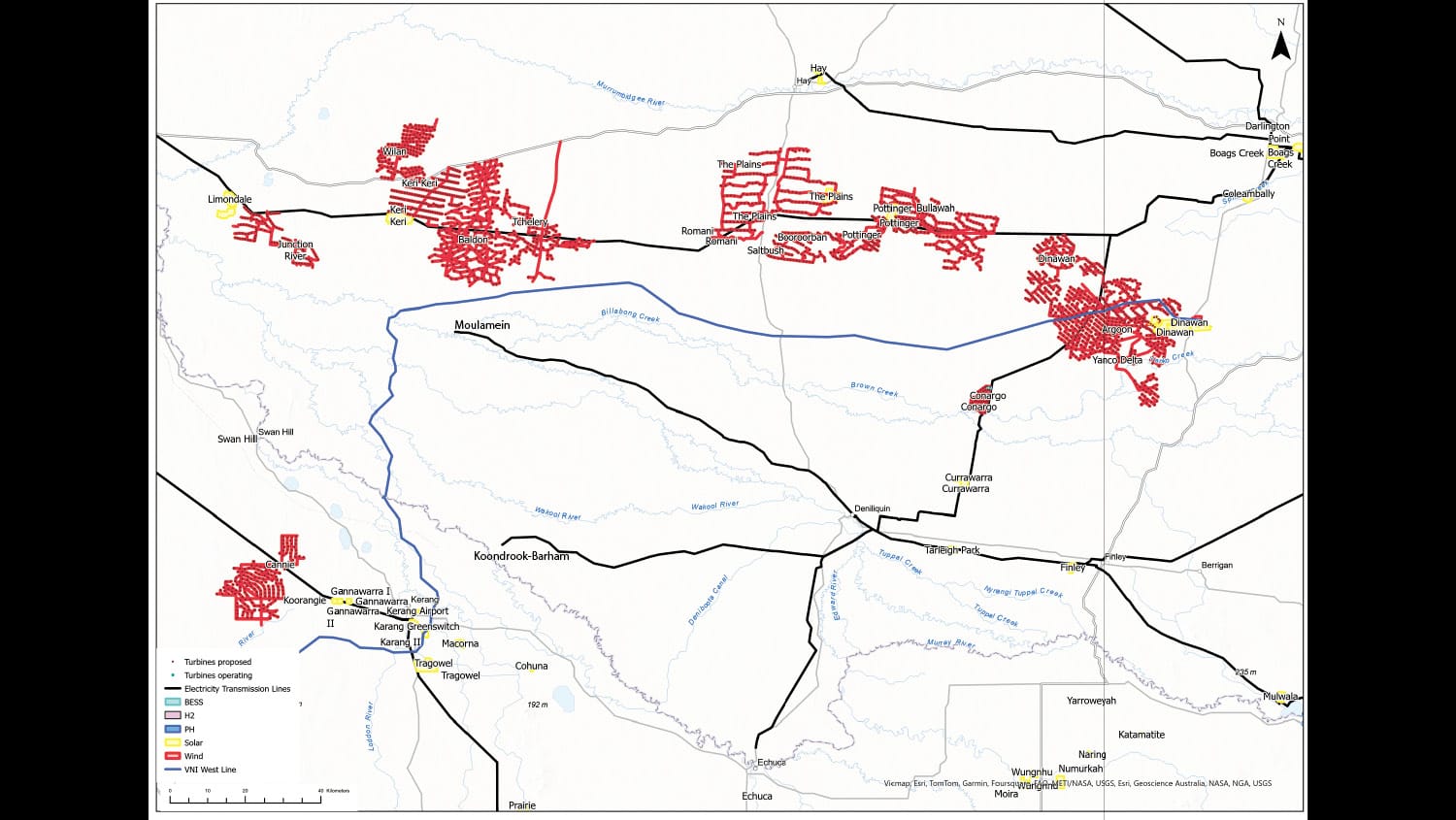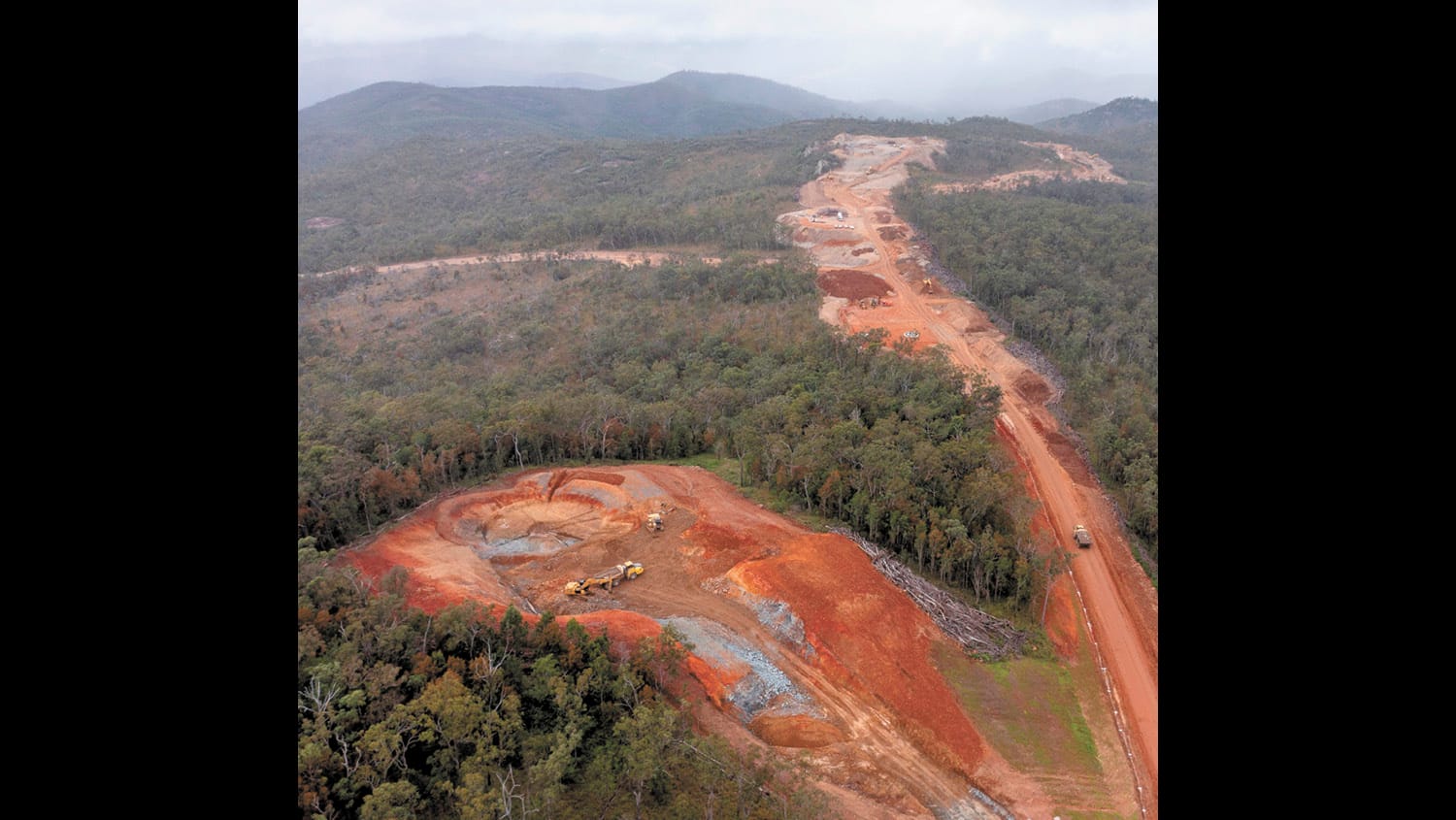Scale of Big Renewables Laid Bare
The Federal Government’s push to go ‘green’ appears to be spiralling out of control, with new costs estimated that the transition will take $1.3 to $1.5 trillion. I don’t know about you, but I find it hard to fathom a trillion dollars, so...

The Federal Government’s push to go ‘green’ appears to be spiralling out of control, with new costs estimated that the transition will take $1.3 to $1.5 trillion. I don’t know about you, but I find it hard to fathom a trillion dollars, so here’s a quick reminder:
If I had a million seconds, I’d have 11.5 days.
If I had a billion seconds, I’d have 32 years.
If I had a trillion seconds, I’d have 32,000 years!
What do we get for our money? Cheap, reliable, centralised power generation, with technology that will last for more than half a century? Or expensive, decentralised, precious metal intensive, unreliable, short-lived technology that will carve across some of Australia’s most precious landscape?
One man who has witnessed the scale of development and clearing to host these projects is Steven Nowakowski.
“I’m a photographer and I publish natural history products such as calendars and diaries and books, but also do freelance work, and I was asked to photograph the completion of Queensland’s very first industrial wind farm called the Mount Emerald wind farm.
“I was very supportive of that wind farm at the start, even though it was going to clear plants that were listed as endangered, five endangered plant species, but I was happy to do that, to accept that for climate change and for renewable energy, and then it was built.
“I photographed it, and then I was gobsmacked at the amount of destruction that it had caused in those really fragile ecosystems.”
With Steven’s eyes opened to the trade-offs in, as he describes it, industrial renewables, he thought that Mount Emerald would be it,
enough energy to power 90,000 homes. But shortly after, he was asked to photograph another wind farm, and another. Now there are 53 wind farms planned right along the iconic Great Dividing Range.
“So those 53 wind farms will generate 22 gigawatts of installed capacity, but the problem with wind farms, particularly in Queensland where we don’t have very good, strong wind resources, is that those wind farms will only operate between 15 and 35% capacity factor. So, we need to triple that.
“We’re going to need about 150 wind farms in Queensland to try to get the reliable energy that we need at night time, at that peak time to keep the lights on.”
To get his head around the size and scale of these developments, Steven turned to his first career as a cartographer.
“My passion is map making, so what I’ve been able to achieve is map these projects as they get proposed across Australia, and that’s really hard.
“I’m involved in an organisation called Rainforest Reserves Australia and we have a team of volunteers that are constantly scouring the internet trying to find projects that have been proposed every single day – and it is really hard, because these projects go under the radar.

“They’re very hard to find and a lot of communities reach out to us and provide the data as well as the mapping data of where these projects are going in their local areas.”
With the data Steven has at hand, they have identified 21,000 turbines earmarked for Australia, but I do note that even with the map Steven provided, some projects in Gannawarra and Campaspe LGAs in planning phases aren’t listed.
“To connect all those turbines, we’ve mapped around 20,000 kilometres of brand new roads that need to be built to connect all these turbines together and then, when it comes to transmission lines, I don't know, it’s too hard to calculate.
“Chris Bowen has always said that we need 28,000 kilometres of new transmission, but we can’t map that. It’s just too hard to map because each wind farm needs its own new transmission lines, then transmission lines to substations and substations into the grid, and we haven’t been able to map all that.”
The Member for Mallee Dr Anne Webster MP used National Agriculture Day to highlight one of the major threats to farming in Mallee – energy projects.
“Research out on Friday from Frontier Economics has laid waste to Prime Minister Albanese’s claims. Labor’s globally unprecedented experimental transition to an exclusively renewable energy mix will cost $520 billion more than they estimated,” Dr Webster said.
“At last count there are over 50 existing or proposed wind or solar projects within Mallee, with a rapidly expanding footprint into prime agricultural land. Which is unsurprising given wind and solar simply cannot carry the load for Australia. The NEM Dashboard shows consistently over the last 12 months that coal and gas provided 63% of Australia’s energy – baseload power – not intermittent wind or solar.”
Dr Webster said nuclear energy placed on existing coal-fired power plant sites is the internationally proven solution for Australia’s energy and food security.
Advocacy group Farms for Food recently shared footage of Litchfield, Donald and Watchem farming stalwart Jim ‘Spud’ Hepworth’s call for farmers to respect their intergenerational neighbour relationships and not buy into divisive energy and mining projects. Project proponents have had a practice of using non-disclosure agreements to secure lucrative deals with individual farmers. Dr Webster shared Spud’s testimony from the video in a parliamentary speech in Canberra last sitting week.
“Spud is spot on – the threats are coming thick and fast. Wind turbines, solar panels, transmission lines like VNI West (240km+ from Bulgana to Murrabit through Tragowel, Charlton etc) and WIRES (110km from Warracknabeal to Bulgana through Minyip and Rupanyup) – and increasingly active mineral sands proposals are carving up Mallee to put energy and mining first and second in Mallee. Food production and food security is at risk,” Dr Webster said.
“Farmers have a right to farm but Labor lords it over them as if farmers are peasants who own nothing, only farming at their feudal lord’s pleasure. It’s time private property rights were upheld.”
When I asked Steven what he thought should be done to address the failing, his message was simple.
“We need to stop, and we need a federal body that oversees the transition rollout so we don’t end up with stranded assets or a duplication of assets.
“There is no plan. So, everything is being done in an ad hoc, random, chaotic way.
“We need to have a look at all energy generation systems, and we need nuclear in the mix, and nuclear power needs to be assessed as well as renewables.”






